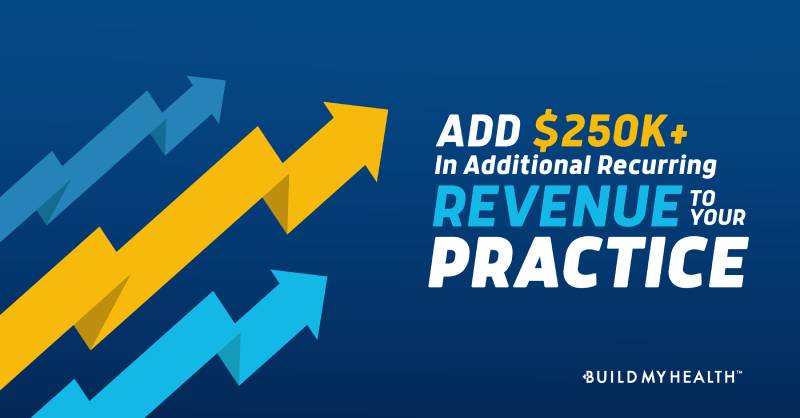It’s happened to all of us. You jump on social media for a quick peruse and quickly fall down the rabbit hole of the scroll. The next thing you know, you’ve saved, taken screenshots, and maybe even DM’d a handful of surgeons whose before-and-after images and mind-blowing videos have you wanting to sign up for surgery (whether it is on your bucket list or not). You think you may have found the surgeon of your dreams, but have you? Or have you stumbled upon someone posing as a qualified surgeon and, in reality, is far from that.
Social media has become the modern-day yellow pages for finding a surgeon providing aesthetic services. But just because you fawn over a surgeon’s Instagram feed doesn’t mean the research should stop there. It shouldn’t. Discovering a surgeon on Instagram or Tik Tok is just the start because there’s a lot of vetting to do before you opt for plastic surgery with your favorite surgeon on #doctok.
Social Media and Cosmetic/Reconstructive Surgery

Like any business, aesthetic providers rely on social media as a marketing tactic. “We use it for marketing ourselves and our practices and bringing patients in the door,” says Dr. Tim Sayed. Today, most patients look to social media to learn about a popular procedure or treatment since there’s a place for education on the platform. Some surgeons take to social media for entertainment and comical value, but does that equate to a more successful surgeon? Unfortunately, it’s hard to tell and quantify. Others, like Dr. Sayed, utilize social media more for patient engagement and education, especially when it comes to complex and controversial procedures like BBLs and explant surgeries. However, the source of information is hands down the most important factor to consider when you’re learning about anything that offers a cosmetic benefit, no matter how small or large.
Although some shady surgeons on social media doctor their images and put entertainment as a priority over education, there are plenty of plastic surgeons who use their platforms as a way to do good. Take, for example, the controversial topic of breast ex-plant (breast implant removal) surgery. While social media may have catapulted the procedure into the spotlight, it also provides a place for women to connect, communicate, and educate themselves on breast implant illness and other breast implant issues. “Social media has shown that women who undergo explant surgery have improvements. For years, they’ve been trying to find answers as to why they are sick, and they don’t want to be discounted or dismissed,” Dr. Sayed says, who does hundreds of explants per year. He shares that he doesn’t push patients toward an explant but instead lets them come to their own decision. “And part of that decision comes from social media, where they learn the pros and cons and can learn of real-world evidence which is symptom improvement.”
Would explant procedures be as front and center today without social media? “We don’t know, but I think these platforms have created an opportunity for what you want to hear and dispute what you don’t want to believe. It’s almost insulting to think that all women will take out their implants because social media tells them these conditions may or may not exist, or that it’s what everyone else is going through,” Dr. Sayed says. Women must learn for themselves, see the information, and make an informed choice, regardless of the results. For the most part, explant patients are honest and truthful when sharing their experiences on social media.
I think these platforms have created an opportunity for what you want to hear and dispute what you don’t want to believe – Dr. Tim Sayed
The Vetting Process

“Just because a surgeon is popular on social media doesn’t mean they are an expert in a particular procedure. And a surgeon with excellent training and great skills may not be popular on social media,” Dr. Mark Youssef says. Once you’ve found a surgeon you like, it’s time to research them. You don’t want to fall victim to surgery with an unqualified provider, which is why a thorough check is important. Here’s everything to do:
1. Check out their website.
If the doctor doesn’t have a website, that’s a red flag. Nearly every type of business in America is represented with a website, which doesn’t have to be fancy or high-tech, but one should exist.
2. Review their bio.
Not every surgeon performs every procedure and treatment. That’s why it’s important to understand who does what and read up on a surgeon’s bio. You also want to ensure that the surgeon has adequate training for the procedure you’re interested in, says Dr. Youssef. But, on the other hand, you don’t want to fall into the trap of having a procedure done by a surgeon who has no training or experience with the surgery you are interested in. “No matter where you find a surgeon, it’s always important to do your homework.”
3. Read their reviews online.
Not every surgeon will have 100 percent of their reviews sing their praise, and that’s okay. Patient reviews and testimonials on social media and websites are usually the best of the best, but if you dig a little deeper and visit review sites, forums, and even Yelp, you may find concurring feedback or even something completely different. If you find one bad doctor review after another on a specific surgeon, consider the source and decide if surgery with that surgeon is worth the potential risks and outcome. And don’t be shy when it comes to direct messaging a surgeon—if they don’t respond at all or reply with a canned answer, you’ll have a pretty good idea of what you’re dealing with. “When we get comments and messages, we try and answer them in a timely fashion while being as educational and informative as possible,” Dr. Youssef says. Just because you love some before-and-after images may not be reason enough to have that surgeon operate on you.
4. Board certifications count.
Any surgeon you trust to perform any procedure on your face or body should be appropriately board certified. “Surgical training, skill, and experience are far more important than being a doctor-slash-influencer on social media,” Dr. Youssef says.
There are several board certifications that a doctor can hold, so looking for the right ones are important. Dr. Sayed explains there’s some confusion with board certifications, so your surgeon should have the proper full credentials and training for a specific specialty. “There’s no board specialty in cosmetics,” he says. The American Board of Plastic Surgery is the premier certification for plastic surgeons who should have a minimum of six years of post-graduate training with a focus on plastic surgery procedures. Other elite societies to see if your surgeon belongs to include the American Society of Plastic Surgeons (ASPS) and the Aesthetic Society. “Other boards, like the ENT board, have facial plastic surgery certifications, and most plastic surgeons are well trained in the face and neck regions,” he adds.
5. Take a good hard look at before-and-after images.
A picture is worth a thousand words, and that saying holds true in the case of images on social media. A dramatic before-and-after image can ‘sell’ a potential patient on a procedure or a doctor when the results may not be realistic. “A surgeon should have a reasonable number of before-and-after images on their social media pages representing the procedure you are looking for in a body like yours. This way, you can get a better idea of the results,” Dr. Sayed says.
However, images are easy to manipulate, so you want to put on your investigator hat and pay attention to specific details. Dr. Youssef suggests looking at the lighting and making sure it is similar in all photos. “Also, look at the angles and ensure that the doctor used similar angles.” If the images are not consistent or seem too good to be true, there’s a good chance they have been photoshopped. When that’s the case, it’s best not to pursue that surgeon since it’s too hard to get an accurate read on a realistic result and the true outcome of their work.
Another thing to keep an eye out for is immediately apparent results shown on the operating table, especially with procedures like liposuction and BBLs. “Some surgeons are smart with cinematography and photography and can manipulate the image or video to give more of a snatched waist. But the skin doesn’t tighten up that fast, and there’s not always that instant of a change with these surgeries,” Dr. Sayed explains. He also says that there are a lot of oiled-up bodies on the operating table with perfect blue draping. Patients should be cautious of images with a lot of manipulation, which may create unreasonable expectations of body types. “Other procedures, including breast augmentation and tummy tuck, provide more dramatic results when shown on the operating table, for example. With augmentation, the breasts are immediately fuller, and with a tummy tuck, you can see the skin that has been cut out and removed.”
Written by Elise Minton Tabin




